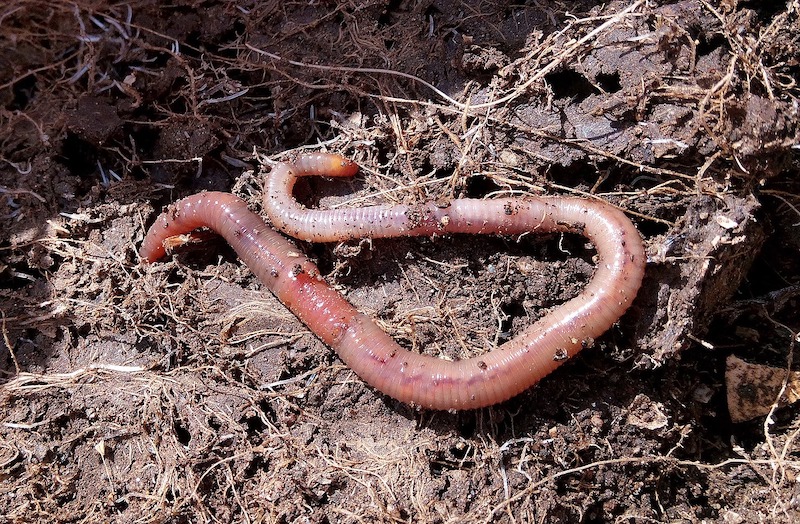Want to know how picture perfect plants are grown? Then it's time you are introduced to worm composting in your gardening routine. Worms may be icky and slimy, but they can help you achieve a healthy garden with plants you can be proud of. Read on to know more.
Vermicomposting is the fancy word for using worms or worm poop as plant food or fertilizer. This is how nature works wonders with seemingly insignificant creatures such as worms and bacteria acting as little cleaners. They play an important role in breaking down our waste and the end product of that cleaning process is the rich material we can now use as compost. Amazingly, it helps our plants grow healthy without the aid of chemical fertilizer, which is not good for us. Learn how you can boost your soil naturally with the help of worms, here.
Garden Season Tips: Worm Composting For Organic Gardeners
This helpful infographic makes it easier to understand something that is seemingly complicated as vermicomposting. Fortunately, you can do vermicomposting on your own and get that rich compost from your composting buddies, the worms, for your plants
Common Types Of Worms
Although there are thousands of known worm species, only a few are suitable for indoor worm composting. Worms that burrow in the shallow part of the soil or compost are perfect for worm composting. The Canadian Nightcrawler, on the other hand, burrows deep so they won't be suitable.
These are the type of worms that are commonly used in vermicomposting:
- Red Earthworms or Lubricous rubellus (1” to 4”) – Common in composting circles. They can survive cold winters which make them a threat to the ecosystem if released.
- Red Wigglers or Eisenia foetida/Eisenia andrei (2” to 4”) – These species are nearly impossible to tell apart, and normally occur together in the same habitat. They are shallow burrowers and are perfect for composting.
- Blue Worms or Perionyx excavatus (1 1/4” to 2 3/4”) – Common composting worm for tropical climates.
- African Nightcrawlers or Eudrilus eugeniae (6” to 8+”) – Common composting worm for sub-tropical and tropical climates.
- European Nightcrawlers or Eisenia hortensis (3” to 8”) – A common worm used for fishing bait, and gaining popularity for composting.
Selecting The Proper Container
A good compost has a perfect balance of humidity and nutrients. There are four materials commonly used as compost bins featured in here that can help you determine which is convenient for you, and will let you achieve a perfect balance in your compost.
These are the compost bin materials you can use for worm composting:
- Cardboards – Absorbent, vulnerable to rot
TIP: Monitor the conditions of your composter closely to make sure the humidity is at appropriate levels.
- Plastic/Polystyrene – Non-absorbent, easy to clean. The most popular.
TIP: Add more drainage holes to prevent soil from getting too wet.
- Wood – Absorbent, good drainage.
TIP: Choose hemlock or Western Red Cedar for a rot resistant composter that won’t leach oils that will harm your worms. (Avoid yellow cedar and redwood.)
- Metal – Non-absorbent, rusts, could release heavy metals.
TIP: Add more drainage holes to prevent soil from getting too wet.
Proper Food For Your Worms
The relationship of bacteria and worm in your compost mix is the key to achieving a good vermicompost. Bacteria will feed on the compost materials, and in turn, the worms will feed on the bacteria. The end product of that process will be the compost that will work magic in your garden plants.
These pointers here will guide you with what waste materials to use in your compost:
- Always
- Fruits
- Vegetables
- Coffee grounds and filters
- Tea bags
- Sometimes
- Grass clippings – not with pesticides
- Garden clippings – not with pesticides
- Rinsed egg shells
- Never
- Meat
- Bones
- Dairy products
- Heavily-coated paper
Harvesting And Using
Having successfully extracted a rich black compost, you can now prepare your worms for a new batch of composting and prepare your compost before application. Compost application comes in two ways:
Direct Application
Although this is a simple process, these are some points you need to consider when applying your compost to your soil or plants:
- Remove worms (optional).
- Freeze compost.
- Test and mix compost.
- Use in the garden or with potted plants.
Compost Tea
Making a vermicompost tea is pretty much like preparing your tea with a tea bag. Here's how:
- Collect compost in a cheesecloth or a t-shirt.
- Soak the bundle in a bucket of water overnight.
- Strain liquid and add to a spray bottle.
- Spray on plants and soil.
If you want wallpaper-worthy pictures of your vegetables, and want them organic and healthy, then worm composting will do the job for you. You get to garden organically, and you're able to get rid of your waste the eco-friendly way.
For more composting tips and guides, visit here.
Find the topic informative? You'll learn more from our topics below:
How To Compost (Infographic) | Homesteading Composting Guide
Composting 101: What Is Composting?
[Composting] Best Way to Make Organic Compost for Your Garden
Featured Image via epicure



